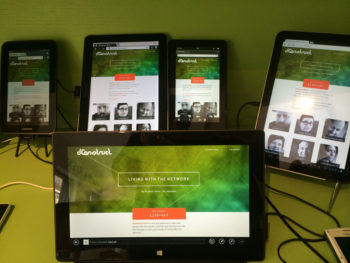 In order to appeal to your target audience and get the traffic you want, you need a solid web design. But a great web design goes beyond more than just flashy graphics and well-placed content. It has to provide a real value to your clients, meet their needs, solve their problems and instill trust. If you can do that, you’re already ahead of the game. Being in the home health care business, you know your audience and its needs (primarily older women searching for quality care for their parents). More importantly, your web designer should be skilled in the niche of web design for home care. Together, the end result is a targeted, methodical approach to web design that will capture the attention of your readers.
In order to appeal to your target audience and get the traffic you want, you need a solid web design. But a great web design goes beyond more than just flashy graphics and well-placed content. It has to provide a real value to your clients, meet their needs, solve their problems and instill trust. If you can do that, you’re already ahead of the game. Being in the home health care business, you know your audience and its needs (primarily older women searching for quality care for their parents). More importantly, your web designer should be skilled in the niche of web design for home care. Together, the end result is a targeted, methodical approach to web design that will capture the attention of your readers.
Take a look at your current website. Is it boring? Is it user friendly? Does it lack that excitement or interest that will convince your readers to go further? If not, you could be in need of a design overhaul. Here are four elements of effective web design.
1. Professionalism
There’s really no way to quantifiably measure the professionalism of a website. It’s something you just feel. A lot of design elements have to come together to achieve this effect, and when it happens, it’s magic. However, you need to convince visitors to stay on your site and take some sort of meaningful action or else your efforts are lost. Statistics show that visitors know within one second whether your website portrays professionalism. Furthermore, 65 percent of people will not trust a website if it has an unprofessional appearance, says Inc.com.
Without quality design, visitors likely won’t take the time to read the content you’ve invested in, continues Forbes. Not only should your website design satisfy human eyes, it also has a big effect on other areas of your home care business, such as SEO, branding, and conversion rates.
2. Quick Loading Times
People are fickle. They don’t want to wait around. And by wait, we mean just a few seconds. Visually says 40 percent of users will leave your website if it takes longer than three seconds to load. If your current web design does not allow for that, you could be unwittingly turning away visitors before they even have a chance to get to know you. The good thing about faster load times is that they lead to lower bounce rates, which means fewer people are leaving your site to go elsewhere. That’s with a one-second load. Jump up to eight seconds to load the site, and you’re looking at a 150 percent bounce rate.
According to the Nielsen Normal Group, the first 10 seconds of the page visit are critical for a visitor’s decision to stay or leave. Users are skittish because they are on the go, have been burned in the past by slow-loading websites and just don’t have time to wait around. The probability of leaving is extremely high during these first few seconds. If users stay beyond that 10-second judgment period, they may stick around to see what you offer. But you’re still not home free. They’re also highly likely to leave during the next 20 seconds of their visit. If they make it to 30 seconds, they are more likely to stay awhile.
3. Color
Everyone likes pretty colors, and an attractive design has everything to do with visual appeal. The colors you choose will largely be determined by your logo colors. While the individual colors are important, it’s more about the right color combinations that make the best impression. Take some time to research the complementary colors that make for a visually pleasing design. For instance, blue, green and white are popular, but purple is the least popular. Your web designer knows the color wheel backwards and forwards and can suggest the best color combos for your home health care site. In general, you’ll want to go with soothing colors that put people at ease and instill trust, such as pastels.
4. Logo
Without a prominent logo, your visitors will be unsure who they are visiting. Your logo is the first step in getting people to trust what you stand for. It shouldn’t be too complicated and should be easily recognizable. Critical to your branding efforts, a well-designed logo and subsequent placement on the page can often make or break the overall appeal. Your polished, professional logo must link back to the home page featuring a high-resolution image at the upper left-hand corner of each page, says CIO. Don’t skimp on the photos, either. Choose high-quality stock photos or hire a professional to take custom ones.
Nothing says unprofessional like a grainy photo of the exterior of your building. Users can spot those a mile away and will form an instant opinion of your business: generic and unprofessional. Good photos go a long way toward instilling confidence and trustworthiness in your visitors. Investing in solid photography will help you tell your story.
Contact A Servant’s Heart Web Design and Marketing
As a home health care business, you need a web designer in your corner who specializes in working with eldercare providers. Here at A Servant’s Heart, we know what your visitors want and can ensure your design meets those needs. Contact us at (760) 227-2720 to request a website review and SEO consultation.


